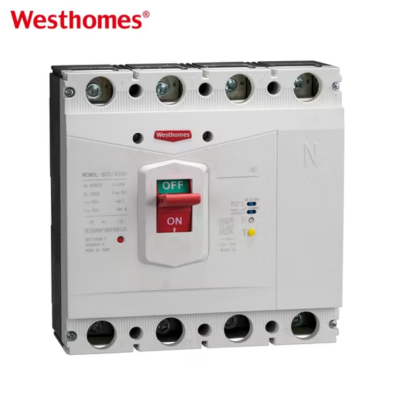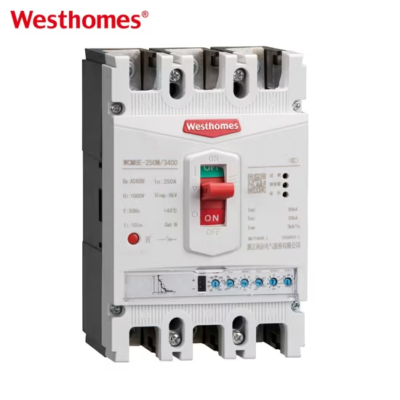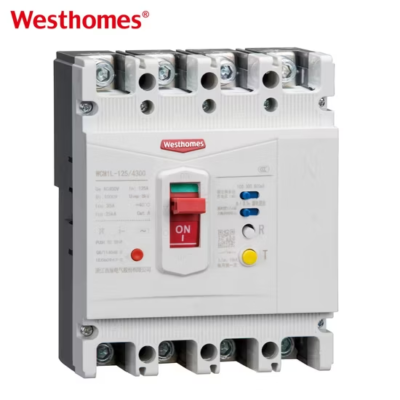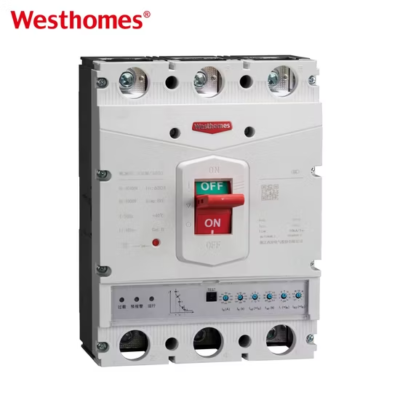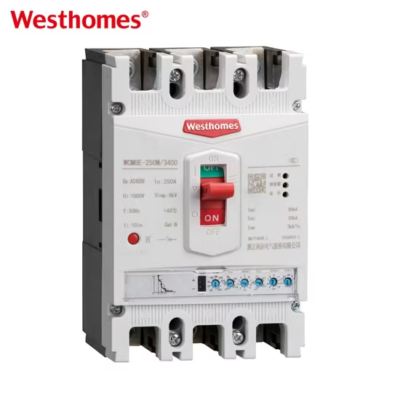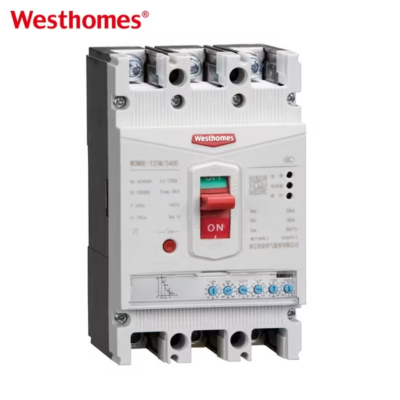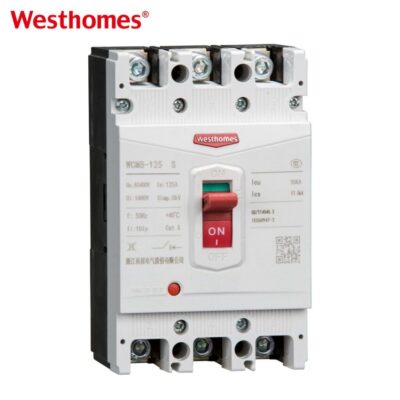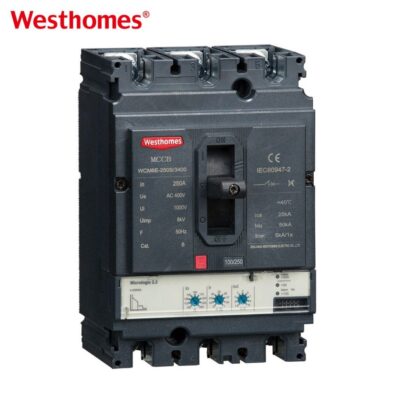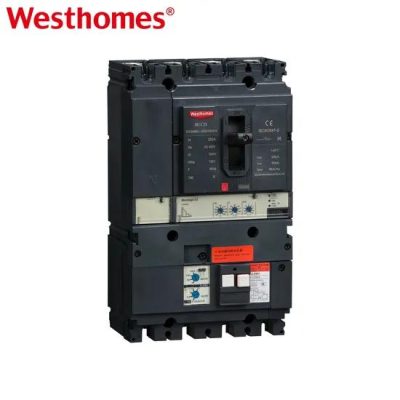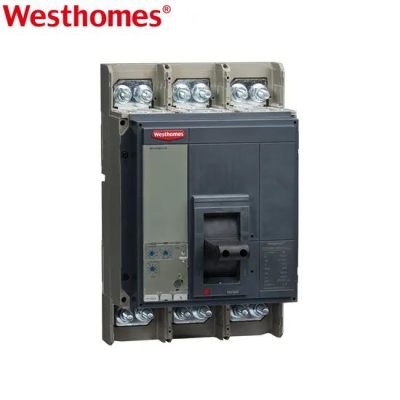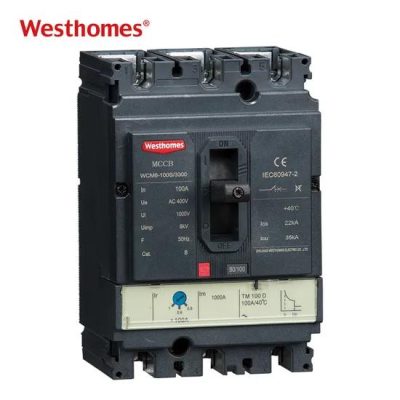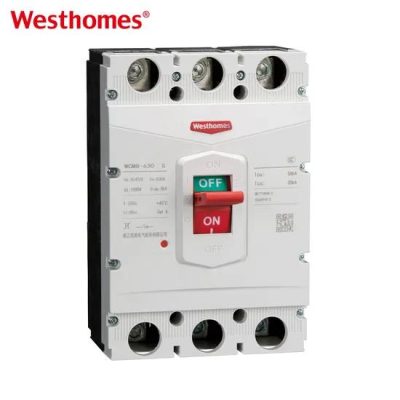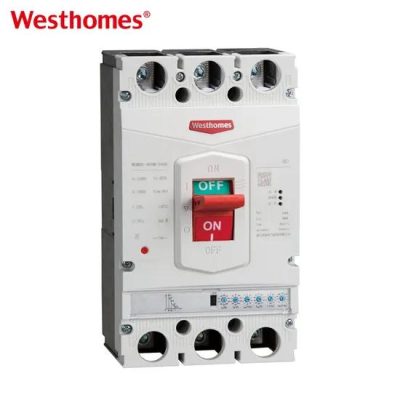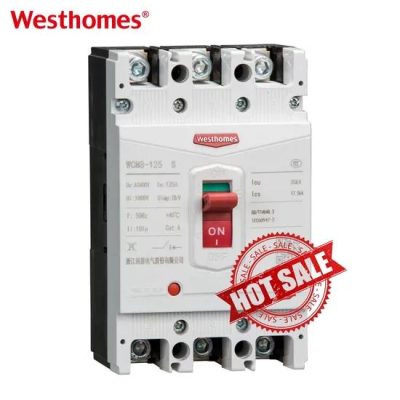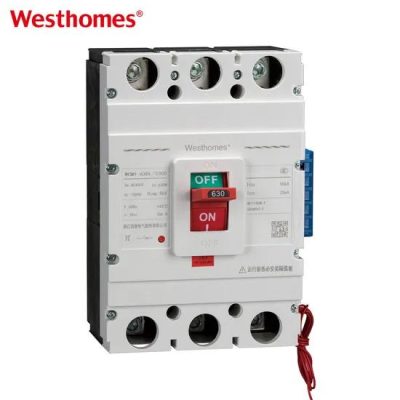Get quick appointment for technical support!
Best AC MCCBs Supplier from China
Designed for reliable protection of electrical circuits from overcurrents, short circuits, and other electrical faults, our AC MCCBs are a top choice for handling alternating current (AC) systems . Westhomes AC Molded Case Circuit Breakers (AC MCCBs) are engineered to safeguard power systems rated up to 690 V. They handle currents from 10 A to 2000 A and can interrupt fault currents up to 100 kA. Each breaker is built for commercial, industrial, and marine environments. They feature compact design, adjustable trip classes (C, L, M, H), arc‑quenching chutes, and vibration resistance.
Westhomes is committed to delivering high-quality AC MCCBs that meet international standards. Our experienced team handles every stage of production—from design and material selection to manufacturing and inspection. We ensure stringent quality control throughout, giving you total peace of mind.
Need help finding the perfect product or system?
No problem at all. Let one of our expert advisors point you in the right direction.
FAQ
What is an AC MCCB?
An AC MCCB (Molded Case Circuit Breaker) is a heavy-duty protective device used in alternating current (AC) electrical systems. It’s designed to protect circuits from overcurrents, short circuits, and under-voltage conditions. Housed in a durable molded plastic enclosure, it provides high breaking capacity and thermal/magnetic protection. AC MCCBs are typically rated up to 690 V, and are essential in medium to high-power systems across industrial and commercial installations.
What are the typical applications for AC MCCBs?
AC MCCBs are used wherever reliable protection is needed for AC-powered systems. Typical applications include:
- Power distribution boardsin factories and buildings
- Motor control centers (MCCs)for pumps, compressors, and conveyors
- HVAC systemsin industrial and commercial environments
- Lighting distribution panels
- Fire pump and emergency systems
- Backup generators and transformer protection
- Marine and offshore installationsrequiring rugged electrical components
Their flexibility in current range (10 A–2000 A) and breaking capacity (up to 100 kA) makes them suitable for both main and branch circuit protection.
How does an AC MCCB work?
An AC MCCB operates using a dual-trip mechanism:
- Thermal trip unit: Reacts to prolonged overloads. It uses a bimetallic strip that bends when heated, triggering the trip mechanism to disconnect the circuit.
- Magnetic trip unit: Reacts instantly to short-circuit conditions. It uses an electromagnet that activates when a sudden spike in current occurs.These mechanisms are housed in a molded case along with arc chutes, which extinguish electrical arcs safely when the breaker trips. Some models also offer adjustable settings to fine-tune protection thresholds for different applications.
What do the trip classes C, L, M, and H mean?
These trip classes represent the interrupting capacity and operating curve of the MCCB:
- C (Common)– Ideal for light loads and basic protection, typically with lower fault current tolerance.
- L (Low)– Standard trip curve, used in general-purpose industrial and commercial applications.
- M (Medium)– Designed for higher short-circuit fault levels, used in heavier industrial setups.
- H (High)– Suitable for harsh environments or systems with very high fault level requirements, such as power generation or heavy industry.
Westhomes MCCBs are available in multiple trip classes to match specific protection needs.
What frame sizes and pole options are available?
Westhomes AC MCCBs are available in:
- 2-pole, 3-pole, and 4-pole configurations
- Frame sizes ranging from 63 A to 2000 A
- Voltage ratings up to AC 690 V, insulation voltage up to 800 V
What is the difference between AC MCCB and DC MCCB?
- AC MCCBsare designed for alternating current (AC) circuits, where current direction alternates cyclically. They usually support up to 690 V.
- DC MCCBs, like Westhomes WCM9Z series, are specially constructed to interrupt direct current (DC) up to 1500 V. These breakers use stronger arc-suppression mechanisms due to the continuous nature of DC.
Can MCCBs be used for motor protection?
Yes. MCCBs can be used for infrequent motor starting and protection. They can handle high inrush currents and provide reliable protection against overloads and short circuits in motor feeders. When paired with appropriate trip settings or coordinated with motor protection relays, they can safely start and stop motors without nuisance tripping.
What factory-backed advantages does Westhomes provide?
Westhomes brings over 20 years of manufacturing experience in low-voltage power equipment. Our advantages include:
- ISO 9001, 14001, 45001, CCC, and CE certifications
- Advanced automated production lines
- Annual capacity exceeding 15 million units
- Full in-house R&D, design, and testing capabilities
What international standards do Westhomes AC MCCBs meet?
Our breakers comply with:
- GB 14048.2(Chinese national standard for circuit breakers)
- IEC 60947-2(International Electrotechnical Commission standard)
This ensures they are approved for use in global industrial and commercial systems with trusted safety and performance credentials.
REQUEST
YOUR FREE QUOTE
* indicates a required field

